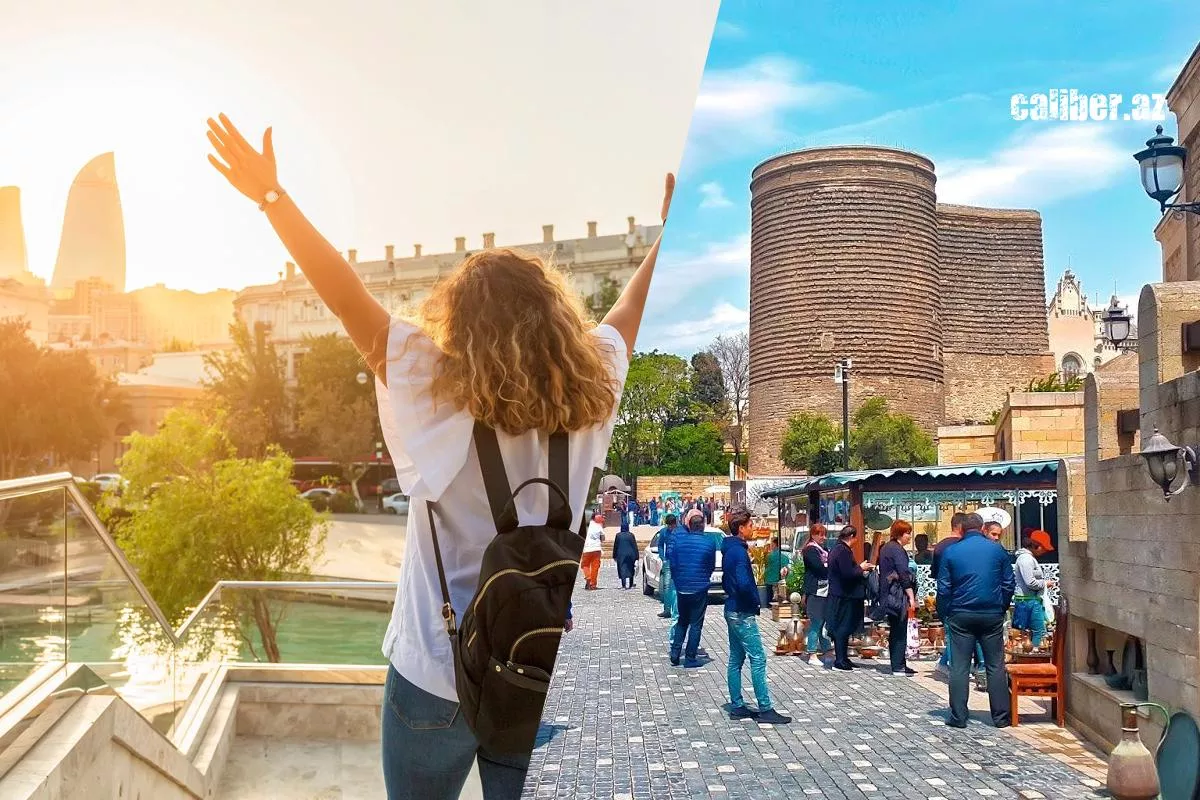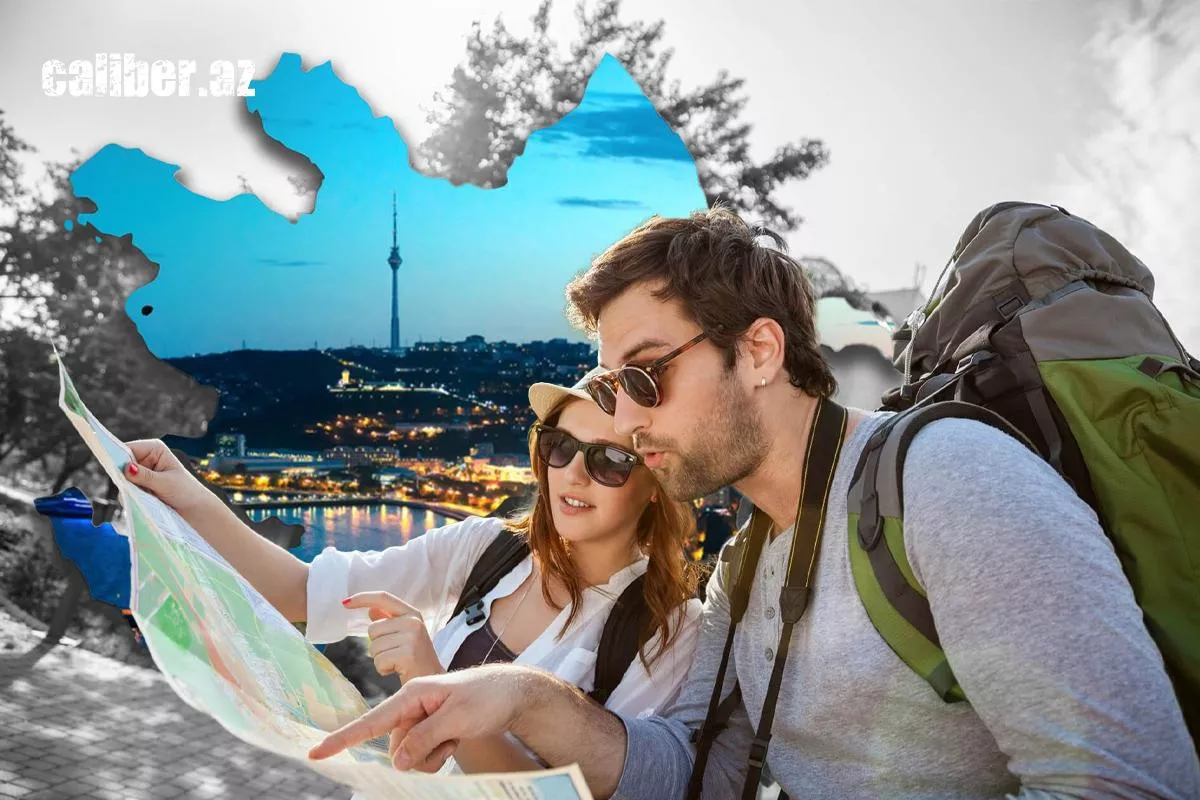Azerbaijan’s tourism strategy: Focusing on China and the Turkic world Prospects on expanding Eurasian travel
Experts from the World Travel & Tourism Council (WTTC) have repeatedly noted Azerbaijan’s achievements in the sustainable development of its tourism sector. The WTTC forecasts that by 2035, the sector’s contribution to the country’s GDP will reach nearly 11%. Given the existing development plans, this target appears quite achievable.
However, this year the sector has experienced some inertia: for a number of subjective reasons, inbound tourism saw a 1.7% decline in the January–July period. One of the key directions for boosting inbound traffic is the expansion of tourist exchange with Central Asian countries. To develop this vector, from August 18–25, the Azerbaijan Tourism Bureau conducted a series of promotional events in Tashkent, Astana, Almaty, and other cities.
Over the past two decades, Azerbaijan has managed to develop a relatively advanced tourism sector. In terms of the number of five-star hotels from renowned brands, high-end leisure areas and restaurants, as well as mountain and balneological resorts, the country ranks among the leaders in the Caspian region. Relying on a fairly extensive recreational infrastructure, implementing simplified visa procedures, and establishing budget-friendly destinations, Azerbaijan achieved an all-time peak in the pre-crisis year of 2019: 3.2 million foreign tourists visited the country.

This record has yet to be surpassed. However, having overcome the negative impacts of the COVID-19 pandemic, regional conflicts, and a series of economic crises in 2022–2024, Azerbaijan’s domestic tourism sector has recovered to over 80% of its pre-crisis levels. Most importantly, significant growth was achieved in inbound tourism. In particular, a notable breakthrough occurred in 2024: nearly 2.627 million foreigners and stateless persons from 196 countries visited Azerbaijan, representing a 25.9% increase compared to the previous year, while total spending by international tourists in the country exceeded $5.1 billion. Additionally, last year the tourism sector contributed 4.5% to the country’s gross domestic product.
This progress has been largely driven by the efforts of the State Tourism Agency (STA) and the Tourism Bureau, which intensified the promotion of domestic recreational products at specialized exhibitions and forums, expanded marketing in the Gulf countries, China, Europe, Pakistan, Central Asia, and other post-Soviet states. The effectiveness of this strategy has been most evident in promoting Azerbaijan’s tourist destinations across the Asian region. According to State Statistics Committee data, in the January–July period of the current year, the number of Chinese tourists visiting Azerbaijan increased 1.6 times compared to the previous year, Japanese tourists rose by 42.9%, Pakistani visitors by 16.1%, and tourists from South Korea by 10.8%. Encouragingly, inbound tourism also showed solid growth from Caspian region countries: during the reporting period, arrivals from Tajikistan nearly doubled, from Kyrgyzstan increased by 36%, from Kazakhstan by 20.6%, and from Uzbekistan by 19.8%.
This growth is far from coincidental: in recent years, Azerbaijan and its partners in the Organization of Turkic States (OTS) have been jointly developing regional recreational potential, helping to strengthen intercultural dialogue. Over the past few years, OTS countries have held a dozen meetings of relevant agencies, with even greater activity taking place within the organization’s dedicated working group.
The main focus of member states is on expanding air travel connections between OTS countries and attracting investment in recreational infrastructure, including negotiations on joint projects in the territories of Azerbaijan recently liberated from occupation. Alongside increasing flight frequencies, OTS countries aim to simplify visa and other cross-border procedures for air travel, optimize digital solutions for travel agencies and hotels in the region, and facilitate smoother operations overall.
Proposals are also being considered for the joint development of tourism products across Turkic countries, including new destinations for pilgrimage, ecotourism, ethnocultural, historical, and other types of travel that highlight the intangible heritage of Turkic peoples throughout the wider Eurasian region. Turkic states are designing joint tours along the “Great Silk Road” and have agreed to establish an OTS Ski Resorts Union to share best practices, develop professional training programs, coordinate marketing strategies, organize events, implement unified ski passes, and expand the union’s membership. Additionally, in April of this year, OTS health ministers in Astana agreed to jointly promote medical and balneological tourism.
Baku has been actively supporting all these initiatives. In particular, the Tourism Bureau showcased Azerbaijan’s tourism opportunities during a series of events held from August 18–25, 2025, in Tashkent, Astana, Almaty, and Minsk. The meetings brought together 50 leading travel companies from Uzbekistan, 70 from Kazakhstan, 70 from Belarus, and 10 representatives from Azerbaijan’s tourism industry, including Azerbaijan Airlines CJSC, as well as hotels and travel agencies.
During the events, presentations highlighted the potential of Azerbaijan’s beach tourism, ski resorts, wellness and SPA centers, cultural and gastronomic routes. This was followed by B2B discussions on further expanding cooperation in the recreational sector with post-Soviet countries.

Apparently, efforts along this track are expected to increase year by year, as attracting visitors from China and other countries in Central and South Asia could become a key driver for the growth of the inbound segment, compensating for declines in some other markets. It is worth noting that in the first seven months of this year, nearly 1.478 million foreign tourists from 182 countries visited Azerbaijan, which is 1.7% less than during the same period last year.
This decline is mainly due to a decrease in arrivals from India and CIS countries—a 6% drop, largely driven by fewer tourists from Russia. Tourist numbers from the Gulf countries also fell by 8.3%. Nevertheless, it should be acknowledged that the results of this year’s tourism season have not yet been finalised, and it is possible that the observed shortfall may be reduced.
Azerbaijani MP Vugar Bayramov recently noted on his Facebook account that the decline in arrivals from the Gulf countries, India, and the CIS inevitably affected the overall performance of the sector: “It is necessary to establish closer cooperation with new source countries for tourists, with particular focus on developing partnerships with China, with which we have strategic relations. However, despite China’s enormous tourism potential, it currently accounts for only 2.3% of the total number of foreign tourists in Azerbaijan, even though the potential and opportunities are much greater.”
Based on available statistics, approximately 77 out of 100 foreign tourists visiting Azerbaijan do not venture beyond Baku. The second most popular destination is the Gusar district, home to a ski resort, followed by Naftalan, known for its numerous balneological centers.
“Foreign tourists mainly stay in large five-star hotels in the capital, which means small and medium-sized hotels bear the brunt of losses; a similar pattern is seen in the regions,” recently noted Samir Dubandi, Chairman of the Azerbaijan Hotel and Restaurant Association and Executive Director of the Ecotourism Association.
According to him, currently, it is essential to tap into alternative inbound tourism markets across a wider geographic area, enhance the capacity of regional international airports, and increase the number of direct flights to new destinations. The resilience of the tourism sector is further strengthened by reducing dependence on seasonal fluctuations and promoting Azerbaijan as a sustainable and reputable tourism brand.
In any case, the World Travel & Tourism Council (WTTC) believes that Azerbaijan is steadily making its mark on the global tourism stage. According to WTTC forecasts, by 2035 the country’s tourism sector is expected to generate over 17 billion manat ($10 billion) annually for the economy, with foreign tourists’ spending accounting for just under 9.5 billion manat ($5.58 billion). This would represent nearly 11% of the nation’s GDP, and the sector is also projected to provide employment for around 670,000 people.








